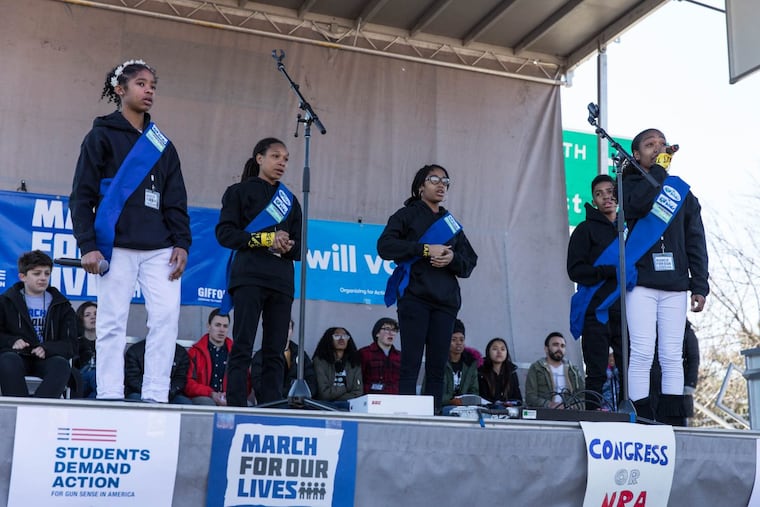What's next for March for Our Lives: Uniting black students in cities with white students in suburbs
Both black and white students want to be safe when they walk out the door, says a woman who helped organize Philly's march.

The traumatizing effect of gun violence on children of color was a central theme at Philadelphia's March for Our Lives. Now, the challenge is making sure those voices stay prominent in the national conversation about gun control.
It's a steep task when gun violence in urban communities of color is often ignored, overlooked, or dismissed with a shrug of, "What can you do?", as if it's just accepted as the norm.
But Romaine Wright, a black consultant who helped three student leaders organize Philly's march, is hopeful. Both black and white students want to be safe when they walk out the door, she said.
"It's a shared message: That we are all standing here against gun violence," Wright said. The difference, she said, is "the suburban students want to come home from school, and the inner city kids actually want to make it to school."
The Valentine's Day shooting in Parkland, Fla., that killed 17 people was at a high school in a largely white and wealthy suburb, but has stirred calls to stop ignoring children of color, who have long tried to bring attention to violence in their communities.
"I want the same thing that those kids want," said Jordyn Williams, 15, when she spoke to classmates earlier this month at Philadelphia's Parkway Center City Middle College. "I'm not saying that those kids' lives didn't matter. I'm saying they aren't the ones being treated like nothing."
At Mastery Charter School-Shoemaker in Philadelphia, Kaiyah Taylor bluntly pointed out, "We have a lot of dying in our community, and no one is paying attention."
Students of color are more exposed to shootings than white students, a recent analysis by The Washington Post found, yet their stories often go unheard. As the story explained:
Some of the Parkland survivors, such as David Hogg, have sought to bring race to the forefront of the national conversation on guns. Hogg told Axios that the media's biggest mistake in covering Parkland was "not giving black students a voice. My school is about 25 percent black, but the way we're covered doesn't reflect that."
At March for Our Lives in Washington D.C., 11-year-old Naomi Wadler captivated the crowd when she described how gun violence victims are treated differently based on race.
"I am here today to acknowledge and represent the African American girls whose stories don't make the front page of every national newspaper, whose stories don't lead on the evening news," Wadler said in her speech, which went viral. "I represent the African American women who are victims of gun violence, who are simply statistics instead of vibrant, beautiful girls full of potential."
At Philly's march, Wright said organizers made it a priority to ensure people of color were involved in both the speeches and promotion of the event.
The student organizers are still planning their next steps, Wright said, but the goal is to continue bridging the geographic gap between suburban and urban students.
"There's a lot of different groups that are targeting gun violence in different ways, but they're all saying the same thing," she said. "So collaboration with all those organizations to share a message is powerful."
Hogg, in his speech at March for Our Lives in Washington, said the goal is to make gun control a central issue in every election. Whether the movement can have that lasting impact remains to be seen. As USA Today reported:
The Washington Post also broke down what Congress has done — but also what it probably won't — do on guns.